Our lab had a great time sharing our research at the College of Engineering Discovery Days. Our booth was entitled, “The Ultimate Machine” because we think of the human body as a complex system with our brain as a controller/computer and our muscles as our motors. Elementary and middle school students used their neural pathway, from brain to muscle, to control a robot gripper by either relaxing or activating their muscle. 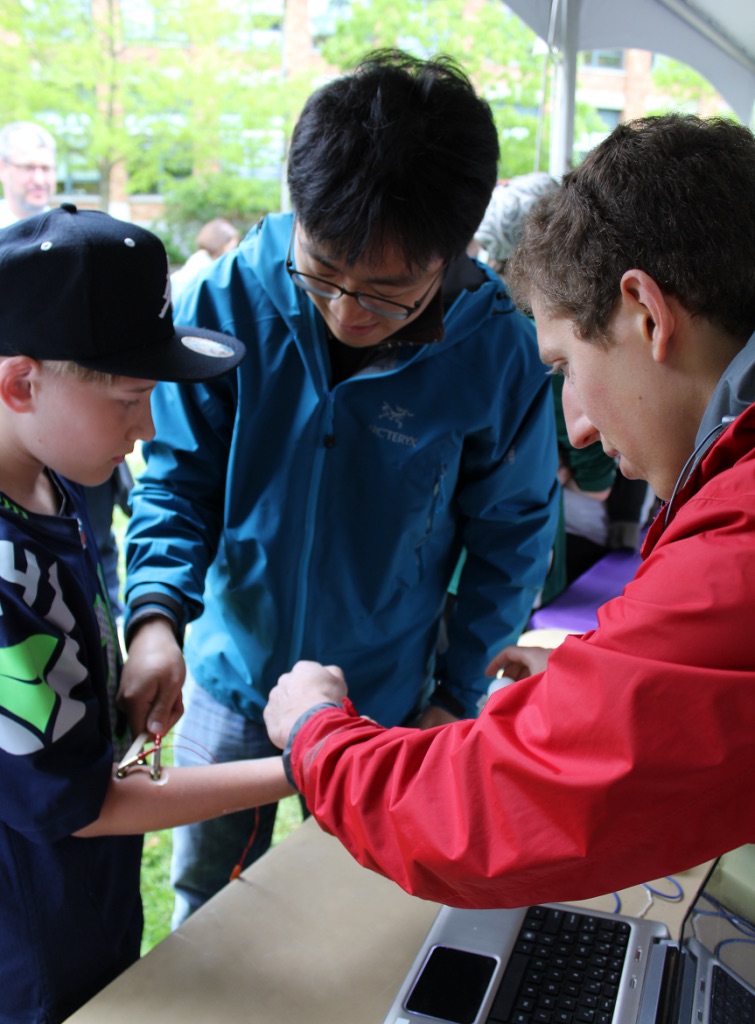
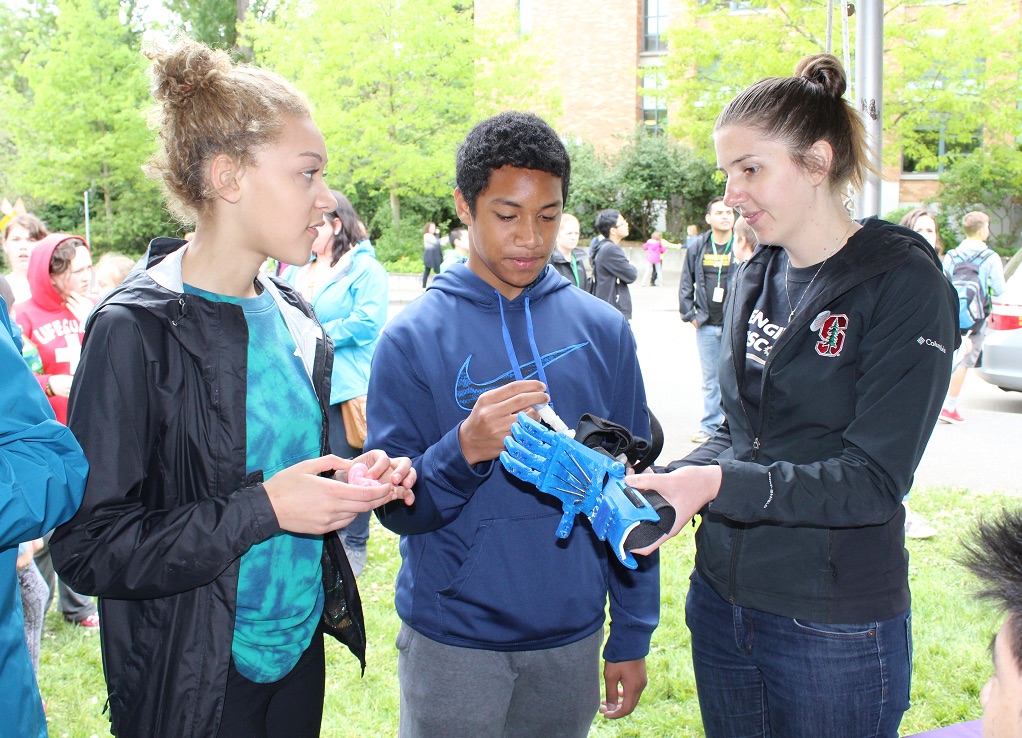
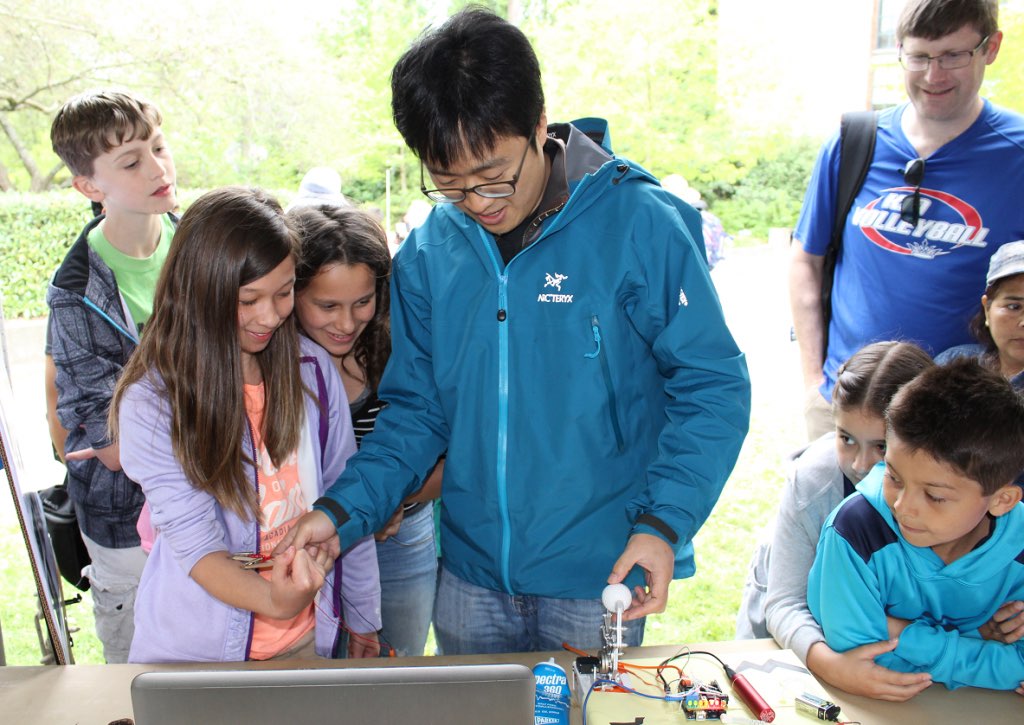
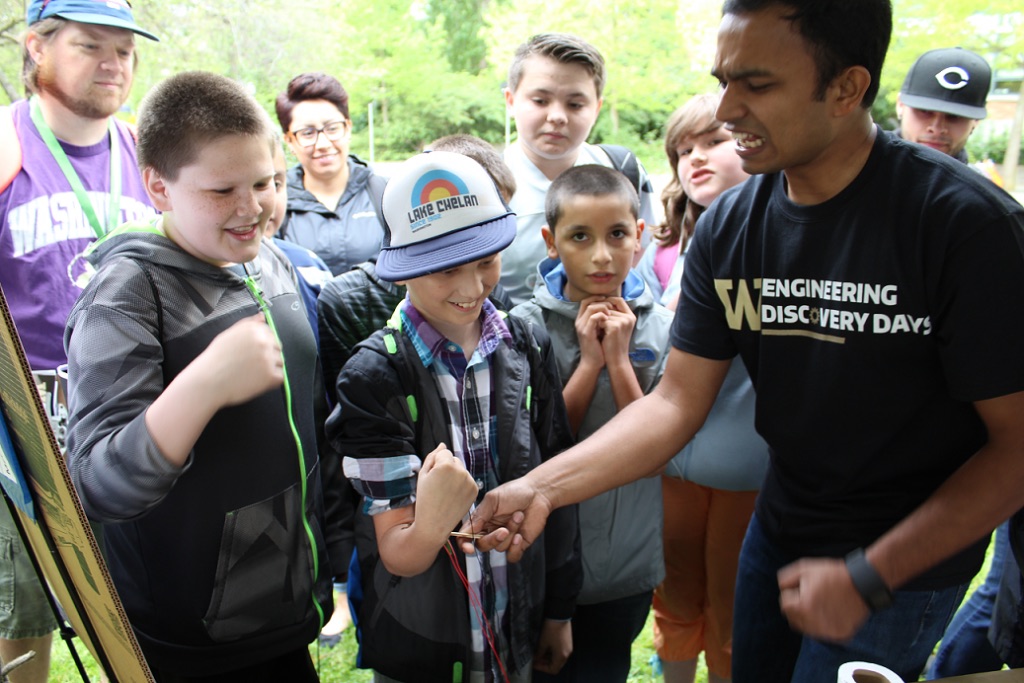
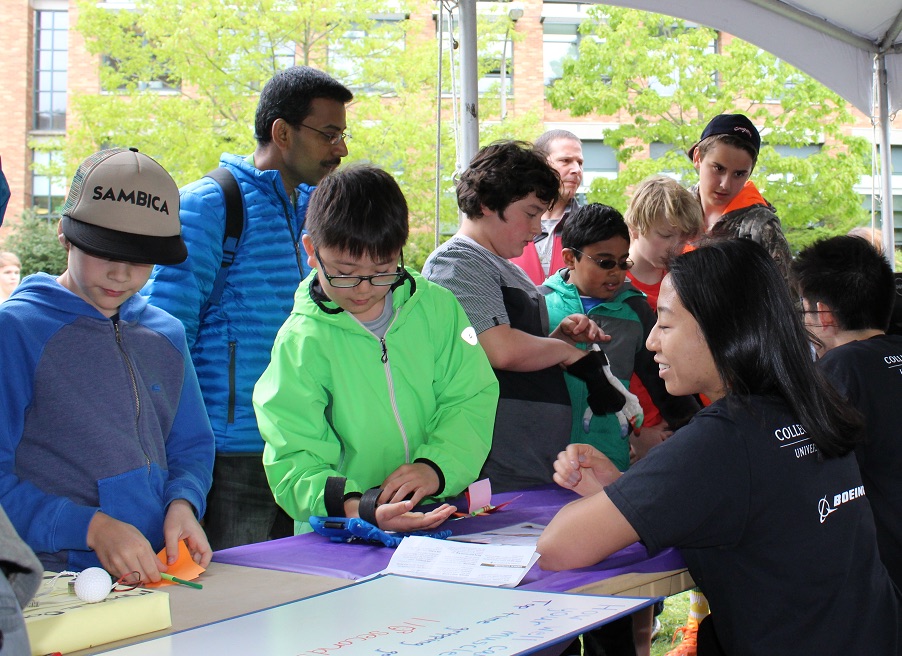
Author: Keshia
MH Schwartz, A Rozumalski, KM Steele (2016) “Dynamic motor control is associated with treatment outcomes for children with cerebral palsy.” Developmental Medicine & Child Neurology
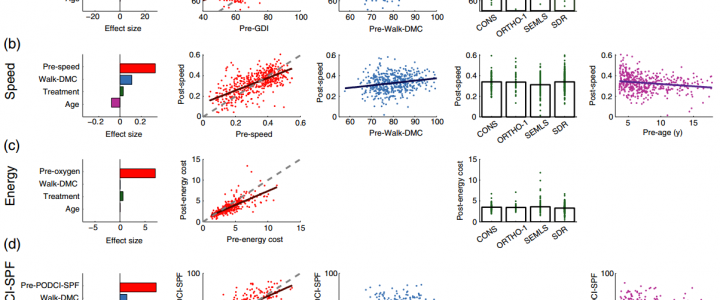
Journal article in Developmental Medicine & Child Neurology:
Kat Steele partnered with Michael Schwartz from Gillette Children’s Specialty Healthcare to investigate the impact of dynamic motor control on varying treatments in children with cerebral palsy.
Aim
To estimate the impact of dynamic motor control on treatment outcomes in children with cerebral palsy.
Method
We used multiple regression on a retrospective cohort of 473 ambulatory children with cerebral palsy who underwent conservative treatment, single-level orthopaedic surgery, single-event multi-level orthopaedic surgery, or selective dorsal rhizotomy. Outcomes included gait pattern, gait speed, energy cost of walking, and the Pediatric Outcomes Data Collection Instrument. Explanatory variables considered were pre-treatment levels of each outcome, treatment group, prior treatment, age, and dynamic motor control computed from surface electromyography using synergy analysis. Effect sizes were estimated from the adjusted response.
Results
Pre-treatment levels had effect sizes 2 to 13 times larger than the next largest variable. Individuals with milder pre-treatment involvement had smaller gains or actual declines. Dynamic motor control was significant in all domains except energy cost. The effect size of dynamic motor control was second only to pre-treatment level, and was substantially larger than the effect size of treatment group for outcomes where both were significant (gait pattern 2:1, gait speed 4:1). The effect of dynamic motor control was independent of treatment group.
Interpretation
Dynamic motor control is an important factor in treatment outcomes. Better dynamic motor control is associated with better outcomes, regardless of treatment. PDF
Kat Steele receives Junior Faculty Award from the College of Engineering
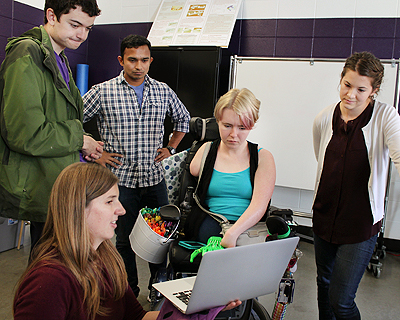 Kat Steele won the Junior Faculty Award for her novel and innovative research in biomechanics, high level of commitment to students and teaching, enhancement of participation of under-represented groups, and a direct contribution to the quality of the life of kids with cerebral palsy. Congratulations, Kat! The Mechanical Engineering department was awarded three of the total eight awards for the College of Engineering. Congratulations to Mark Jankauski for winning the Student Teaching Award and Eric Seibel who won the Faculty Research Award.
Kat Steele won the Junior Faculty Award for her novel and innovative research in biomechanics, high level of commitment to students and teaching, enhancement of participation of under-represented groups, and a direct contribution to the quality of the life of kids with cerebral palsy. Congratulations, Kat! The Mechanical Engineering department was awarded three of the total eight awards for the College of Engineering. Congratulations to Mark Jankauski for winning the Student Teaching Award and Eric Seibel who won the Faculty Research Award.
Sasha Portnova Presents Poster in DC
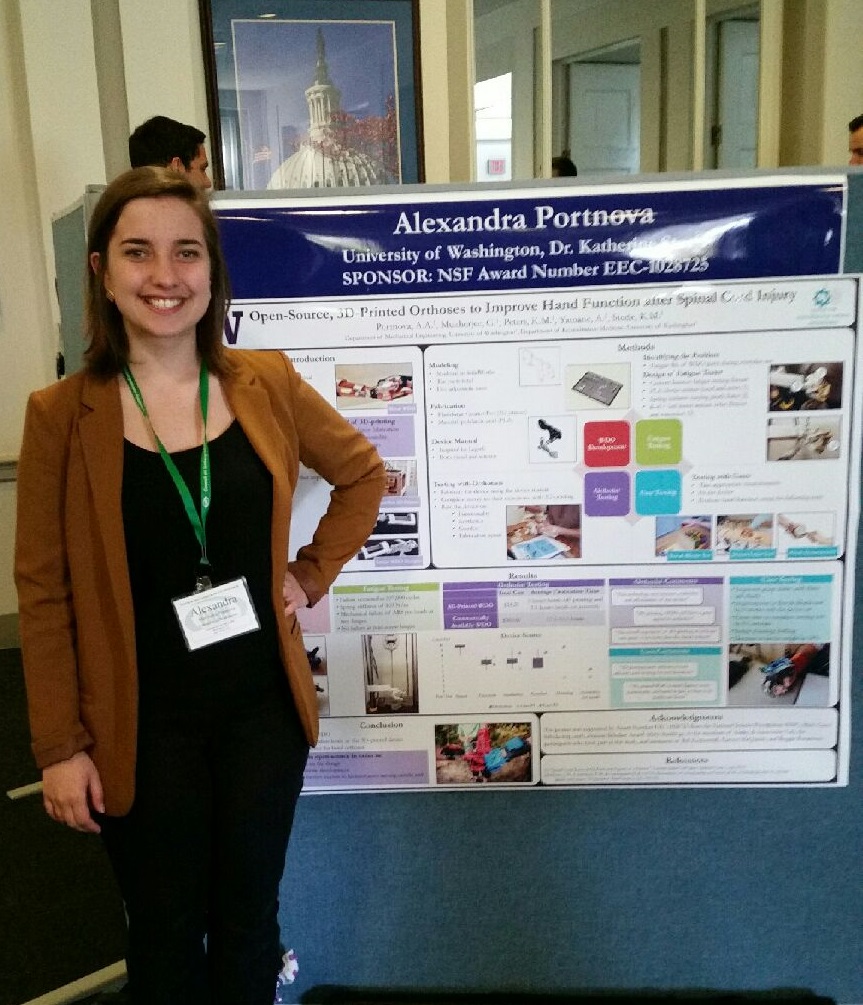 Sasha Portnova is presenting her research at the 20th Annual Posters on the Hill in Washington DC today, April 20th. Out of 300 received applications, Sasha was one of 60 posters chosen for the presentation. She is sharing her work on: 3D-Printed Wrist-Driven Orthosis for Individuals with Spinal Cord Injury. Congratulations and Go Biomechanics!
Sasha Portnova is presenting her research at the 20th Annual Posters on the Hill in Washington DC today, April 20th. Out of 300 received applications, Sasha was one of 60 posters chosen for the presentation. She is sharing her work on: 3D-Printed Wrist-Driven Orthosis for Individuals with Spinal Cord Injury. Congratulations and Go Biomechanics!
Kat Steele is awarded the American Society of Biomechanics Young Investigator Award
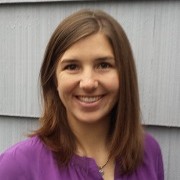 Our lab is very happy to announce that Dr. Kat Steele is the winner of the prestigious American Society of Biomechanics Young Investigator Award. This annual award recognizes early achievements by promising young scientists. Kat will present her work during a special awards session at the annual ASB meeting August 2-5, 2016 in Raleigh, North Carolina. She will also be featured in an article in the Journal of Biomechanics. Go Kat!
Our lab is very happy to announce that Dr. Kat Steele is the winner of the prestigious American Society of Biomechanics Young Investigator Award. This annual award recognizes early achievements by promising young scientists. Kat will present her work during a special awards session at the annual ASB meeting August 2-5, 2016 in Raleigh, North Carolina. She will also be featured in an article in the Journal of Biomechanics. Go Kat!
